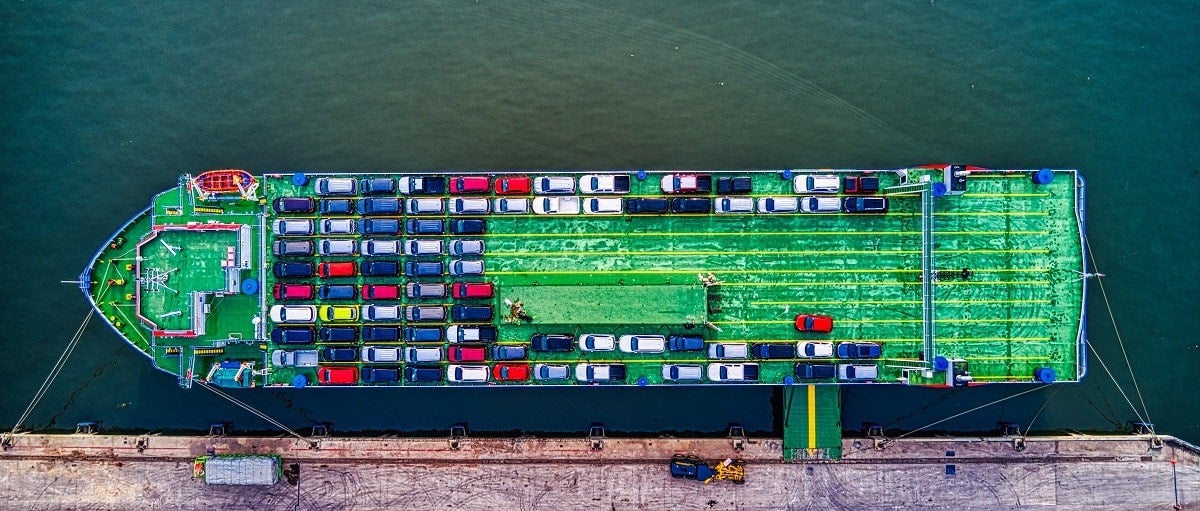Could sea, air and land ports in Latin America and the Caribbean become more efficient and take advantage of new technological tools to compete in global trade?
The quick answer is a resounding yes. Only a handful of countries in LAC – Chile, Jamaica, Panama, and Brazil, for example – have, or are implementing, advanced, digitally-connected port systems, in contrast with several countries in Europe, which began adopting them back in the 1970s.
But LAC countries can definitively innovate and take advantage of the digital transformation to make their ports more efficient, without spending millions on infrastructure
First, some background.
A significant number of players take part in everyday activities at port of entries, serving traffic directly or indirectly. These independent public and private players form a “port community,” where each player can be considered a department of the same virtual company tied together by a common interest in maritime, land and air transportation. We understand a port as a port of entry, which includes, sea and airports, inland waterways, rail, and borders.
Effective coordination and collaboration between these various departments are essential if cargo is delivered to its destination on time and at a competitive price.
Most port communities, particularly in LAC, experience problems that are not in line with the current digital transformation in the transportation industry. Seaports experience low IT penetration; fragmented industries with multiple screens from different systems; an unnecessary number of communication channels; difficulty in uncovering information origin errors when they occur; heavy use of manual transactions; excessive rekeying of information; and unnecessary and wasted (truck) movements.
Port Community Systems (PCS)
To increase efficiency, without necessitating significant capital investment, a good best practice is the adoption of a Port Community System (PCS) – an electronic platform that enables intelligent and secure exchange of information between public and private stakeholders. These platforms can optimize, manage, and automate logistics processes through a single submission of data that connects transport and logistics chains.

Interaction flows between SCPs before and after implementation of a PCS. Source: Port of Antwerp.
The PCS provides a layer of interoperability for data sharing, streamlines communication among entities and helps to improve the flow of work within and across organizations of the port community, in turn getting rid of bottlenecks and enhancing efficiency.
The implementation of PCS does not need to compete with users’ existing systems. Instead, the objective is to integrate all the information needed for supply chain processes into one platform. Some of this information is already available in various stakeholders’ systems, such as terminal operating systems, customs logging systems and electronic single windows for trade.
Benefits of Port Community Systems
The benefits of using PCS solutions include reduced access cost to information, lower cost of communication, fewer illegal transactions and decreased rate of errors and data inconsistencies. More specifically, and there are additional benefits for each type of user, the community gains by realizing:
- Reduced time to market through booking, handling and tracking services.
- Track and trace capabilities for the entire door-to-door shipment process.
- Simplified trade permit declarations by using PCS services to assist the cargo clearance process.
- Automated gate clearance at the seaport.
- Increased information which allows haulers and truckers to better plan movements which can improve overall turnaround times.
- Decreased number of processes and documents exchanged.
- Faster handling of vast amounts of information.
- Elimination of redundant data entries through interfaces between systems, making data acquisition more reliable.
Saving money in operations
Overall, PCSs save money in operations and add value to it. For example, in the case of Valenciaport (Spain), the estimates indicate that the PCS is responsible for saving around €23 million (about $25.6 million) each year across the whole port community. Similarly, Portnet, the PCS currently operating in Singapore, has reportedly generated savings of over $80 million over a three-year period, according to Port Strategy.
The successful implementation of a PCS is directly related to the design of its business model. Issues related to ownership, the operation model, revenue streams, and services orientation need to be defined based on the stakeholders involved. As a result, each port community has its own legal and institutional characteristics. While the technological solution is key, the real challenge to successful implementation lies in overcoming resistance to change among different public and private stakeholders.
PCS in Latin America and the Caribbean
Despite its adoption in large container ports worldwide, the interest in PCS implementation is still in its infancy in LAC. Though several countries have now initiated port connectivity initiatives and PCS, to date only two IDB member countries have PCS solutions either implemented (Chile – Port of Valparaiso, Port of San Antonio) or being implemented (Jamaica – Kingston Container Terminal).
The PCS for Valparaiso is in its second iteration, with cloud migration and the inclusion of more services. In Jamaica, the Port Authority is implementing a PCS with significant enthusiasm and buy-in from Jamaica Customs Authority – institutional cooperation is critical for guaranteeing savings along the supply chain and ensuring sustainability.
In Argentina, Peru, Suriname and Trinidad and Tobago, the IDB is partnering through lending operations to support the design and deployment of PCS solutions. In addition, through the RedVUCE (Meeting of the Single Window Operators) and technical assistance, the Trade and Investment Division is increasing knowledge of global and regional best practices; initiating stakeholder coordination between Customs, Port Authorities, and Ministries of Trade; and providing opportunities for regional coordination.
How to implement a PCS?
But how to implement such system? What are the business models and funding schemes that your port community should adopt? What are the international best practices?
To answer these questions we recently published the report “International Case Studies and Good Practices for Implementing Port Community Systems”, geared at ports LAC and around the world interested in learning how to make their ports more efficient.


Leave a Reply